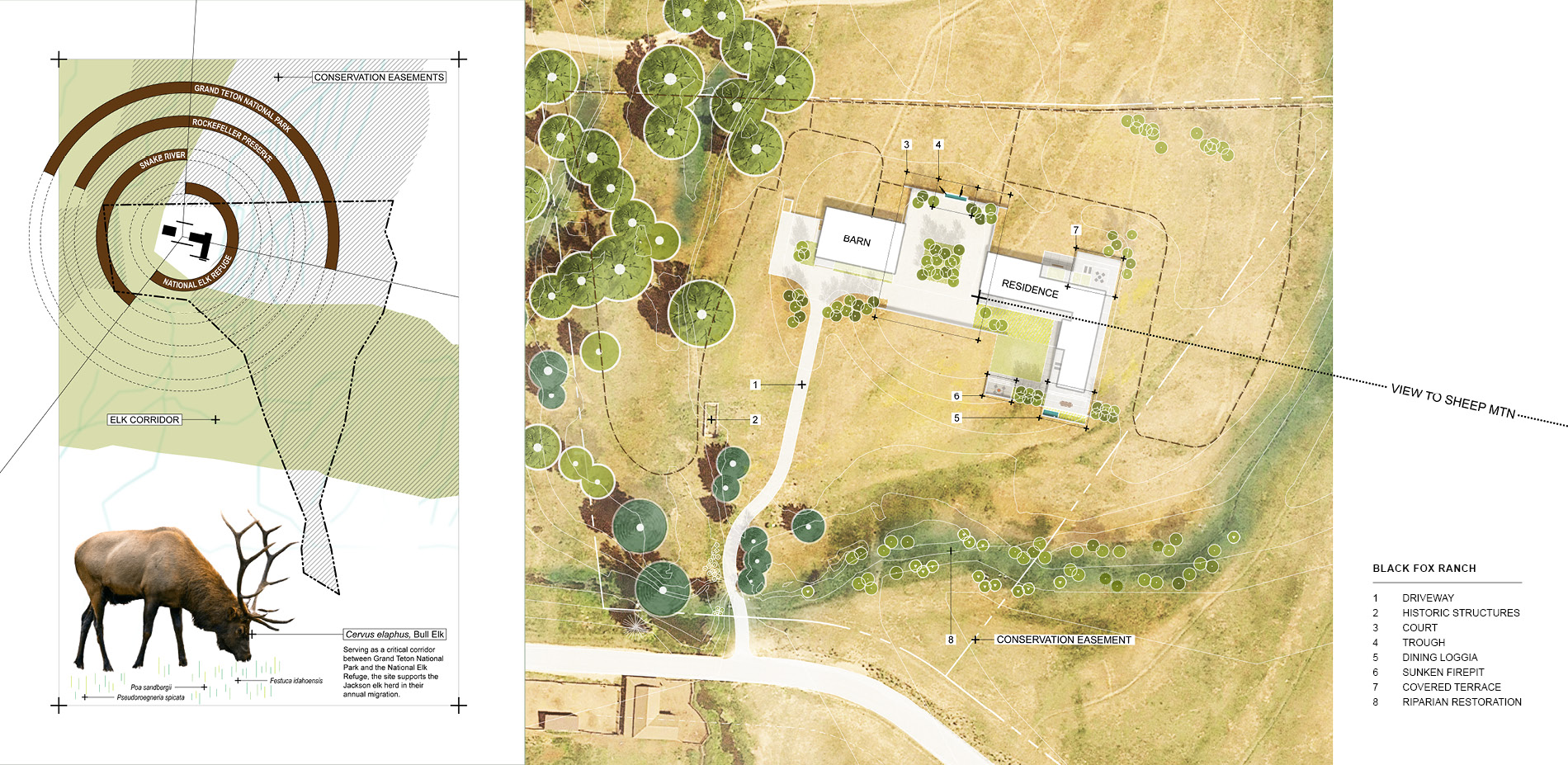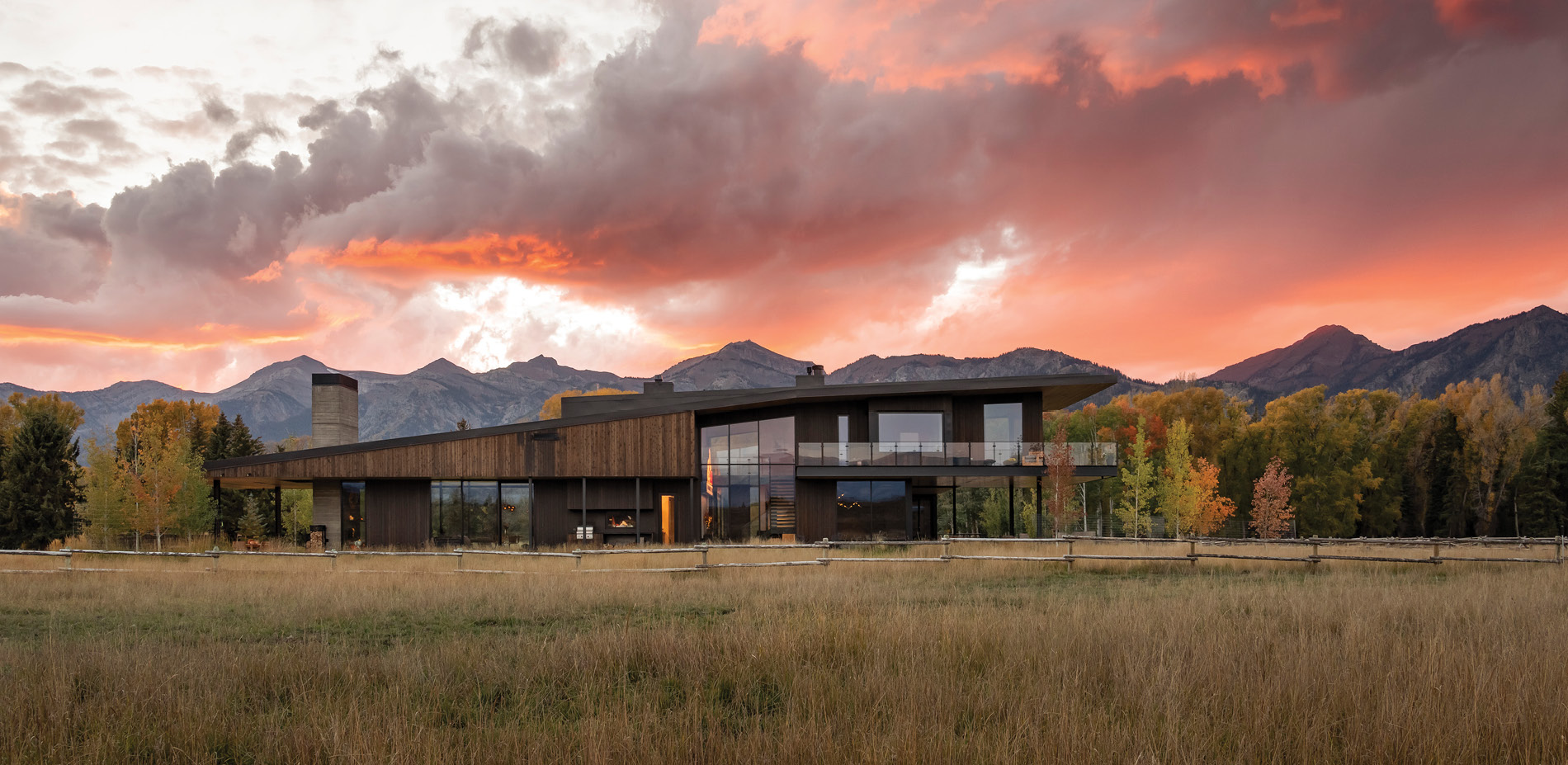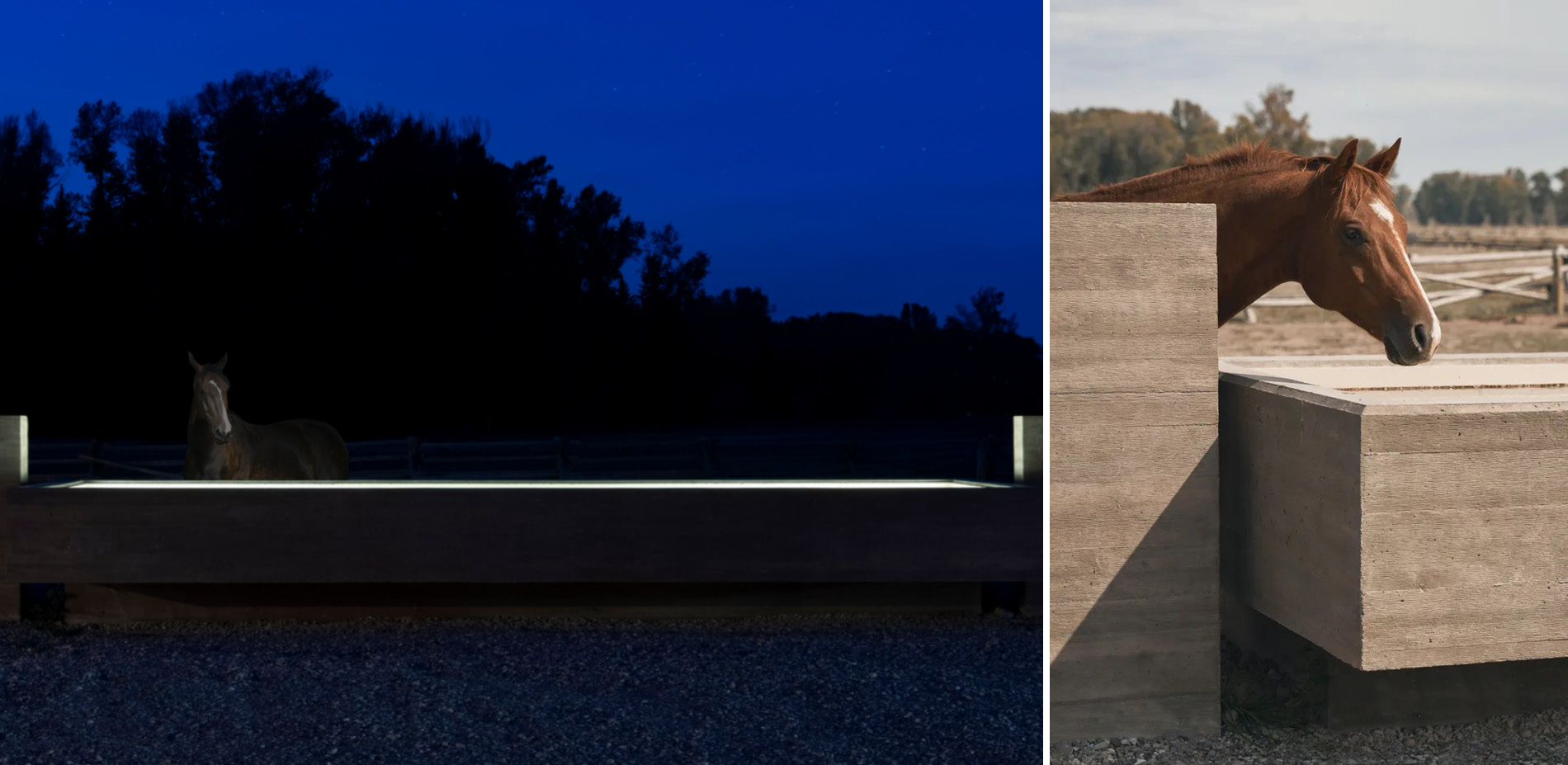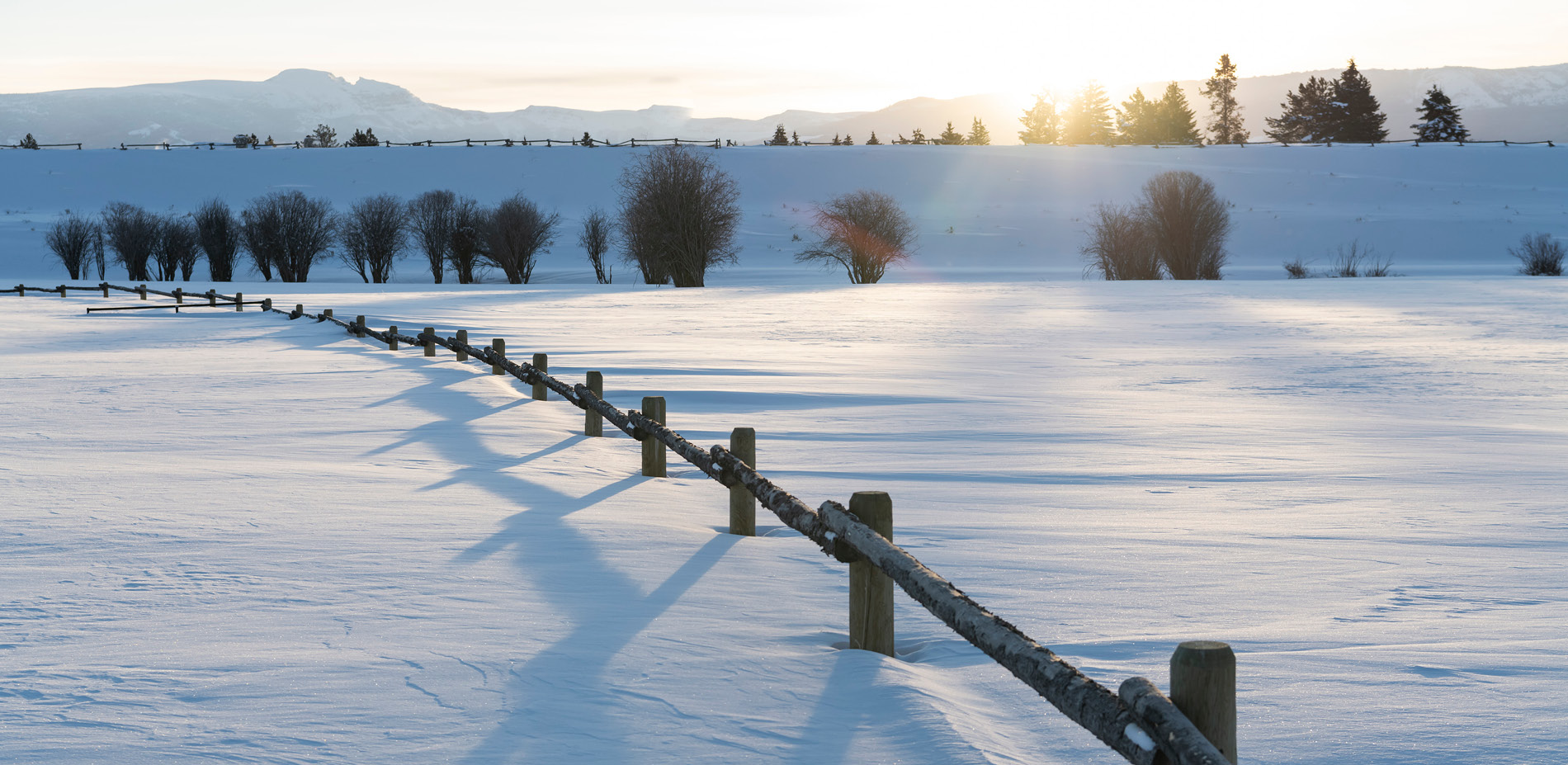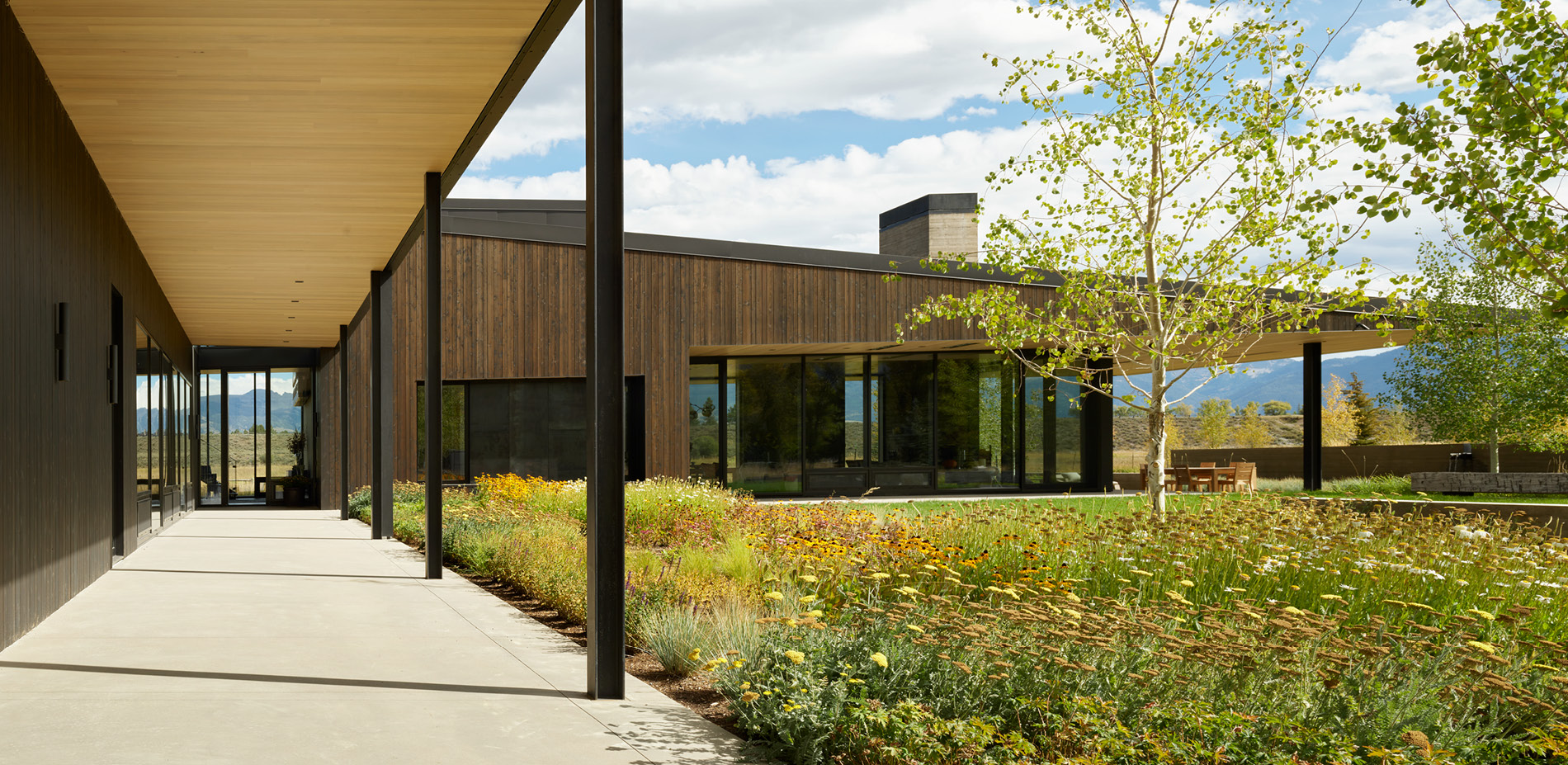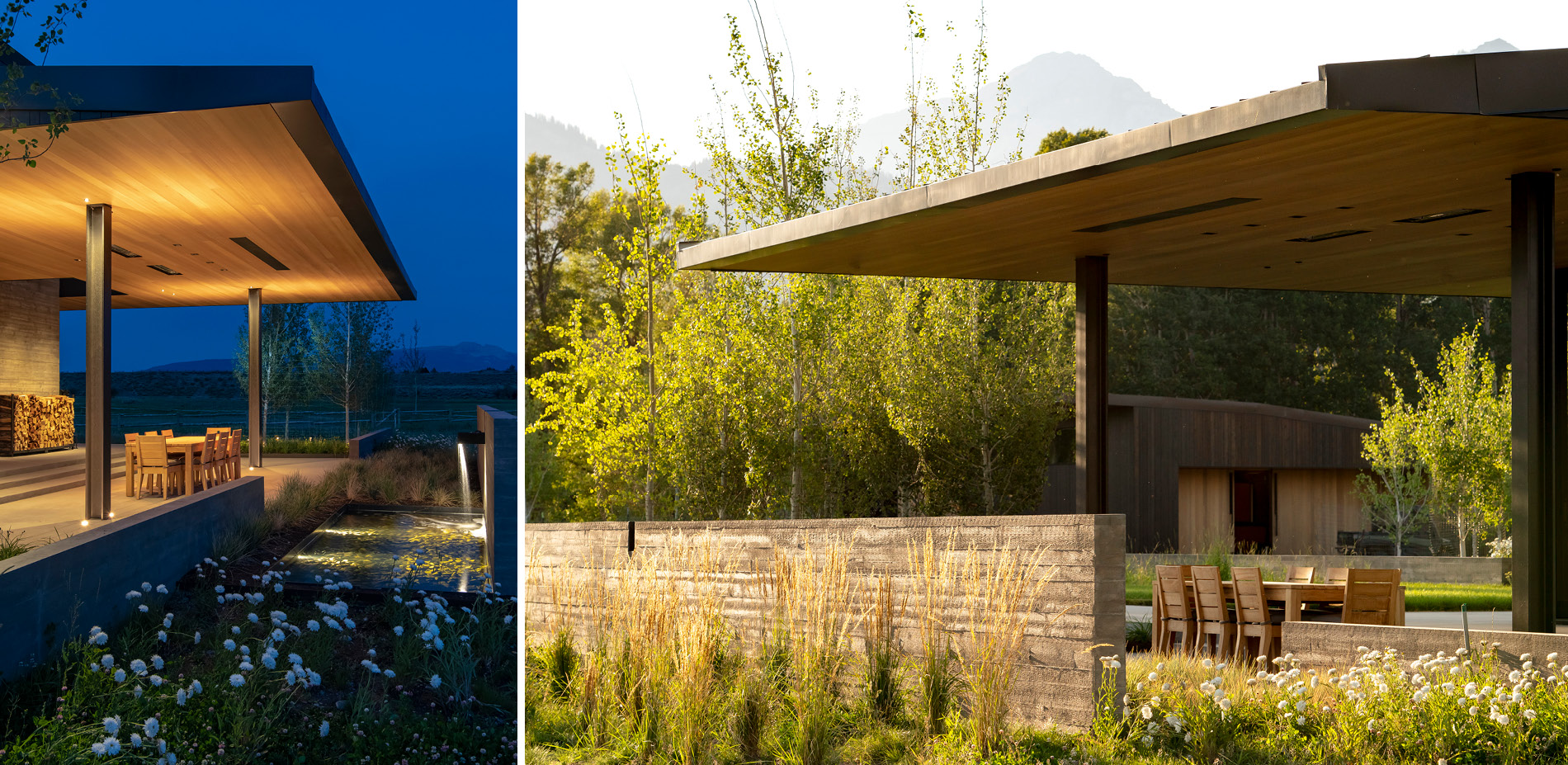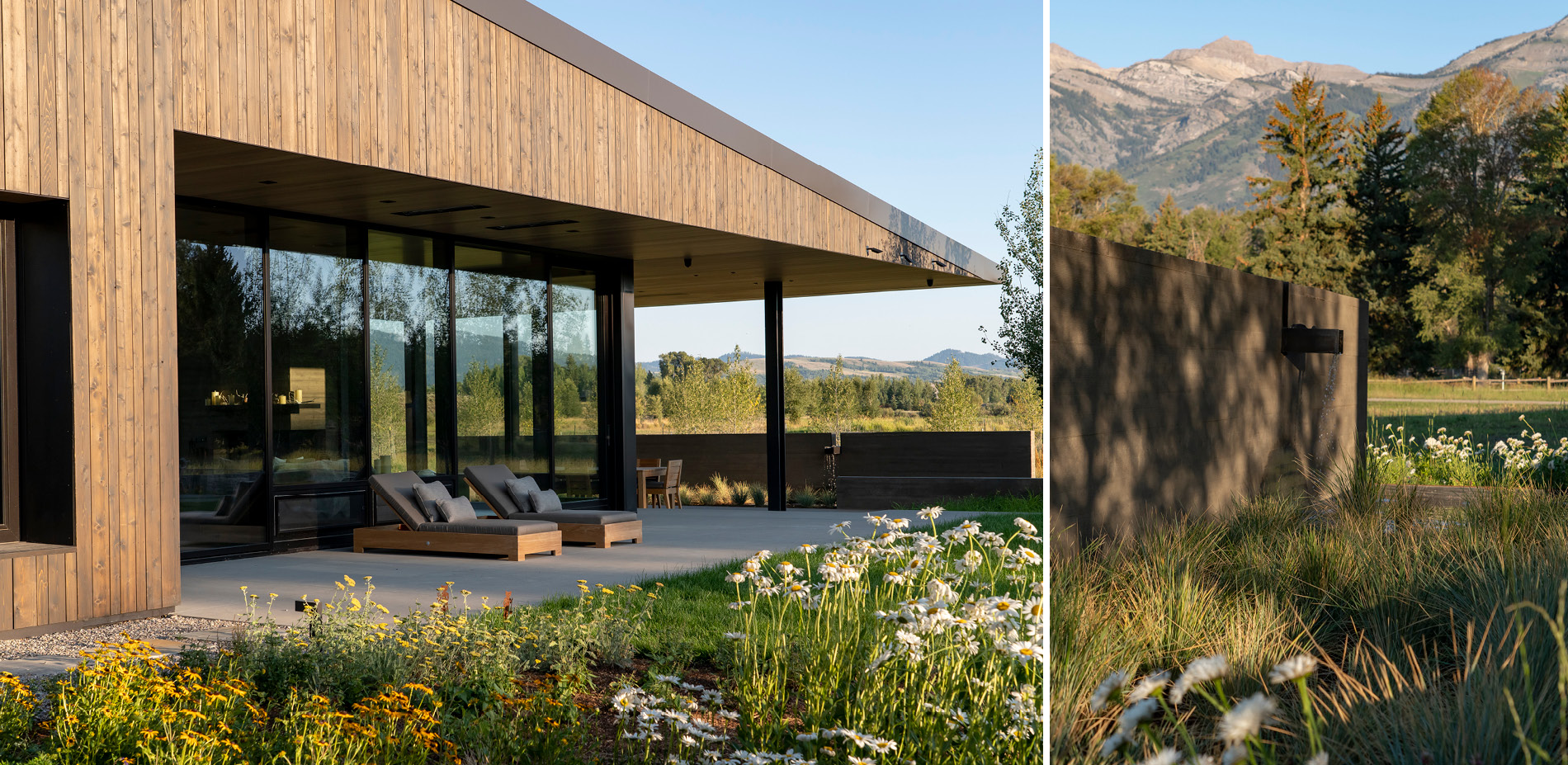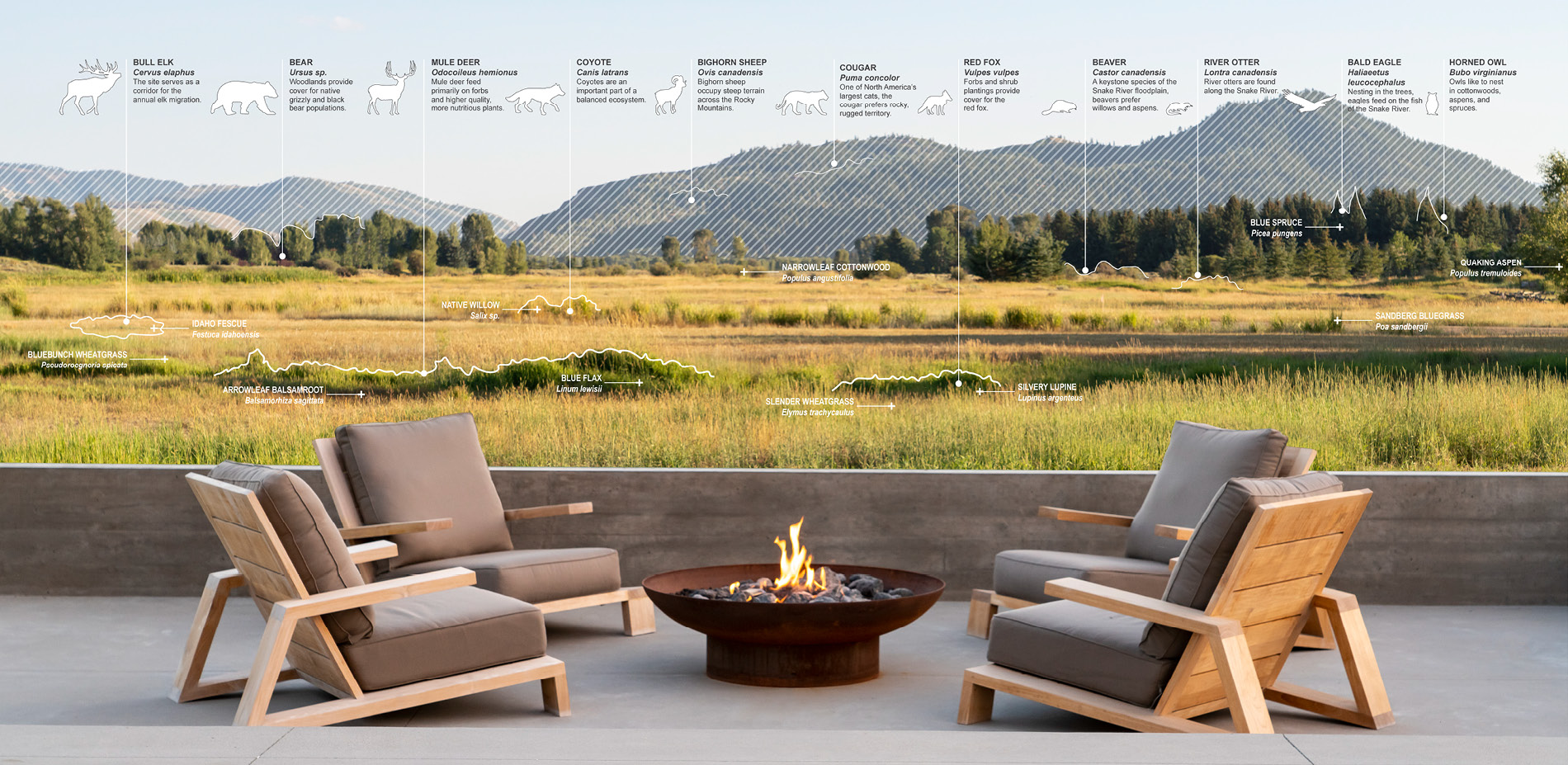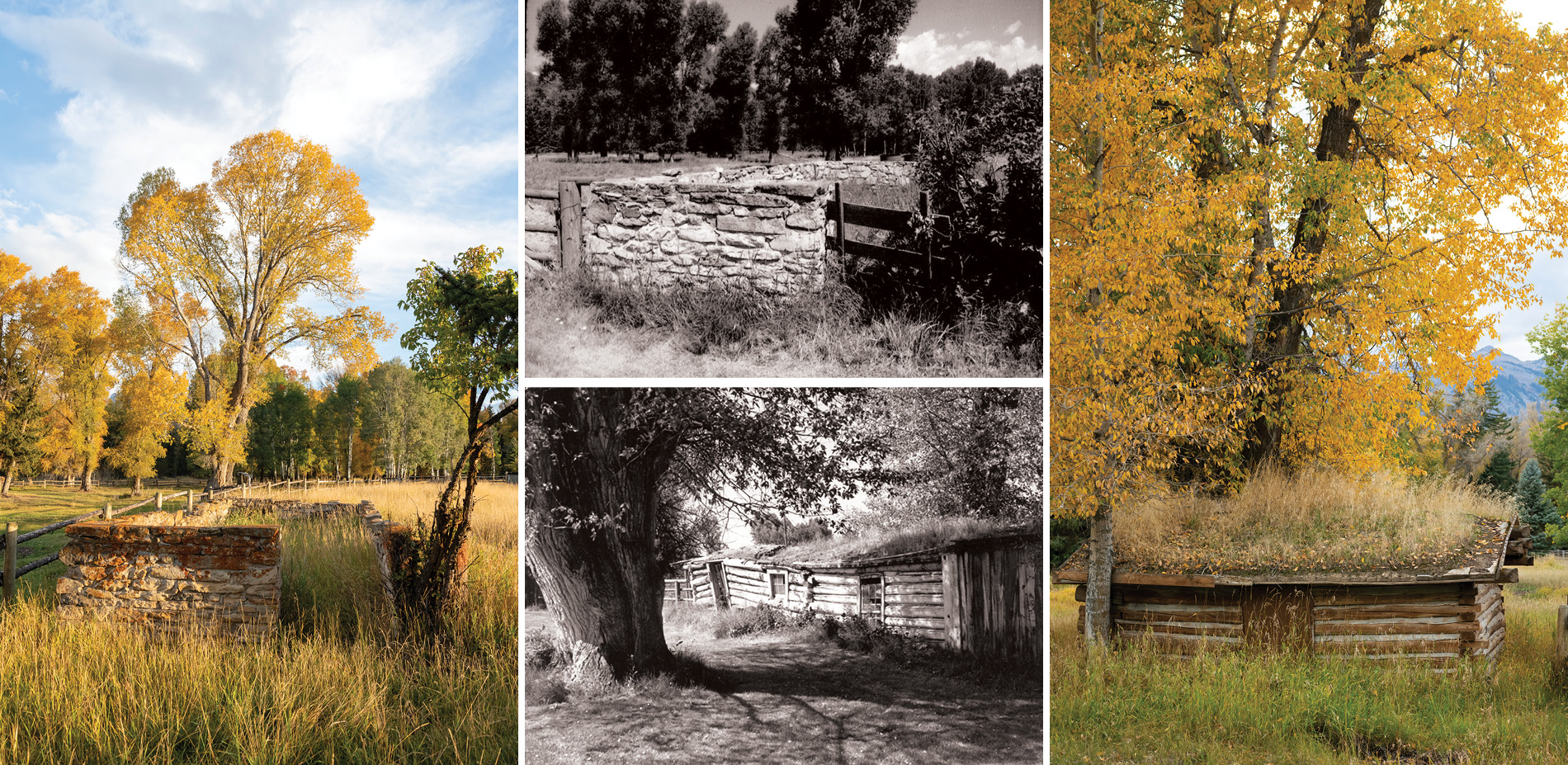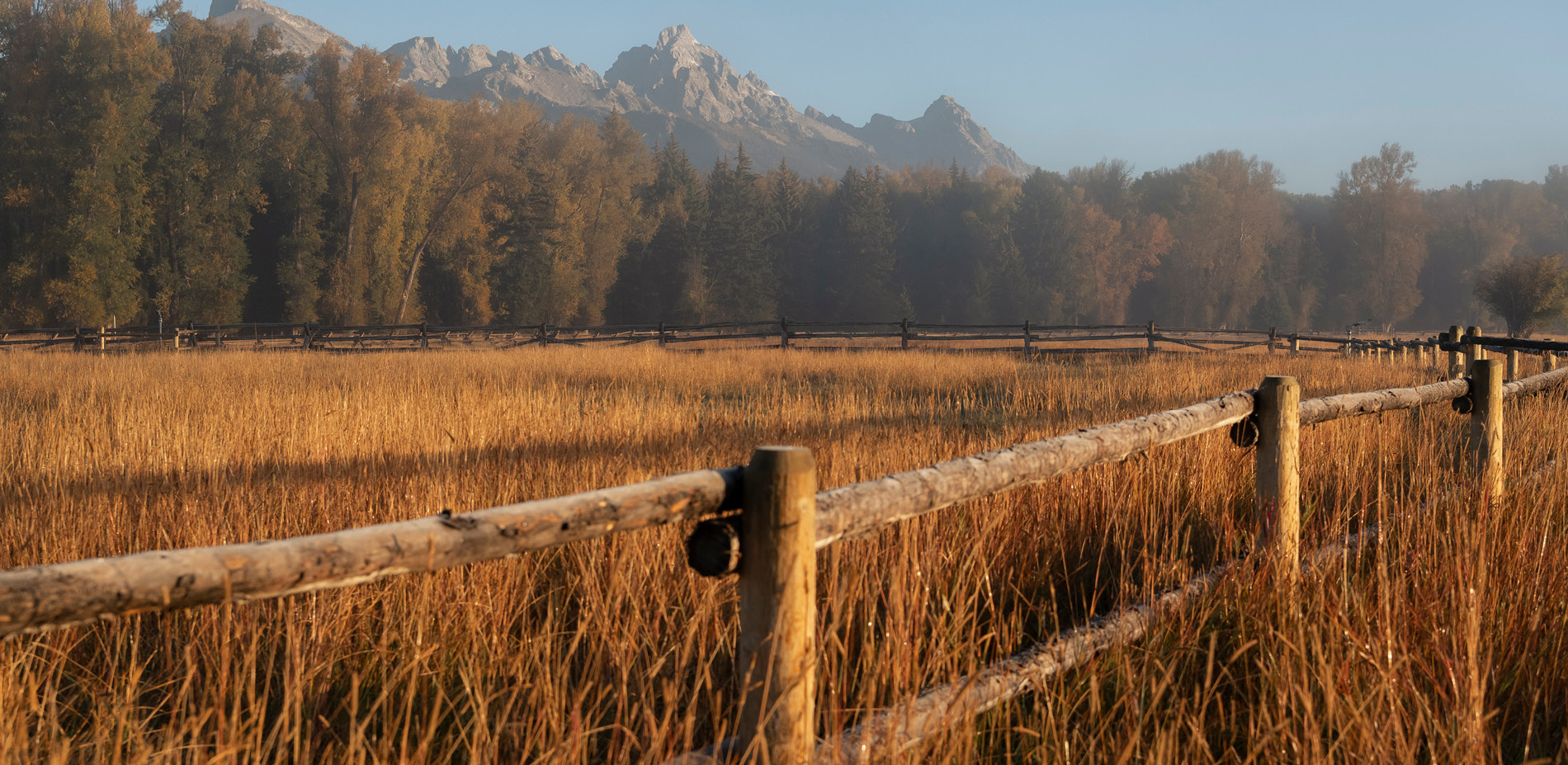Black Fox Ranch: Extending the Legacy of the West to a New Generation
Honor Award
Residential Design
Teton County, Wyoming, United States
Design Workshop, Inc.
An exemplar of environmental stewardship, this project demonstrates minimal disturbance to the land while maximizing the experiences it offers. The design seamlessly integrates nature and humanity, revealing a softness and the subtle beauty of nature.
- 2023 Awards Jury
Project Credits
Mike Albert, FASLA, Design Workshop, Inc., Principal
Ben Roush, ASLA, Design Workshop, Inc., Project Manager
Feras Abdallah, ASLA, Design Workshop, Inc., Project Designer
Sam Daniel, Design Workshop, Inc., Awards Submission
Brandon Huttenlocher, Design Workshop, Inc., Project Photographer
Sarah Shaw, Design Workshop, Inc., Award Submission
CLB Architects, Architecture
Pegasus Design Group, Equestrian Consultant
Water Design, Inc., Water Feature Engineer
KL&A Structural Engineering, Structural Engineer
Nelson Engineering, Civil Engineer/Geotechnical Engineer
Lux Populi, Lighting Designer
Biota Research and Consulting, Ecologist
KWC, General Contractor
Energy 1, MEP Engineering
Project Statement
A contemporary adaptation of working ranch lands, the 35-acre project conveys a narrative of Wyoming’s cultural and natural history, extending the legacy of place to a new generation of users. Prioritizing sustainable planning and design principles, a modern home transitions into a pastoral landscape through distilled interventions trained on maintaining visual integrity, critical wildlife corridors, and ecological restoration. Horse pastures and meadows, compacted from overuse, are now a haven of biodiversity supported by healthy soils and restored, historic water systems. As a holistic effort, the plan thoughtfully addresses a resilient future for sustainable land use in the American West.
Project Narrative
A STORIED PAST Surrounded by a landscape of environmental and cultural significance, the project is located south of Grand Teton National Park. For over a century, the land operated as an 800-acre ranch called the Bar B Bar. In the early 2000s, it transitioned to a conservation-based development defined by 19 lots and over 500 acres of protected open space. One of the lots was purchased by a family with a desire to return the land to its historic agrarian roots. Horses, cattle and hay production were reintroduced under a restorative vision plan that focused on understanding the fundamental value of this distinct natural system.
BEYOND INDIVIDUAL BOUNDARIES While only three percent of Teton County, Wyoming is privately owned, the impacts of human development are felt everywhere—on wildlife, water, native plant communities, and historic structures. Recognizing the importance of the setting and reach of its influence, the landscape architect crafted a holistic vision for managing visual quality, habitat, water, ecology, and history within the context of the surrounding lands.
- Preserve visual integrity of intact meadowlands Promote habitat migration and reconcile a conflict posed by former improvements Improve function of ditches, and water quality and ecology of riparian creeks Enhance biodiversity and integrate immediate vegetation management practices Celebrate heritage of place, engage visitors with the historic ranch remnants
RESTORING A MODIFIED LANDSCAPE A multi-faceted restoration, informed by historical photographs, an inventory of ecologies, and planned equestrian activities, resulted in a context-driven reconstruction of 4.2 acres across four distinct zones. Within pastures, varied levels of soil remediation and weed management elevate soil productivity, forage value and protein content, while ditches are bolstered by riparian plantings that improve wildlife cover. A control methodology recently adopted by Grand Teton National Park leaders to restore native sagebrush grassland by removing smooth brome from hay meadows was adapted, and a partnership with the Jackson Hole Land Trust ensured compatibility with the seasonal herds of elk that also occupy the land. Management framework plans and their sustainability purposes:
Construction Plan minimizes impact of indigenous wildlife Soil Remediation Plan restores areas disturbed by former cattle operations Integrated Weed Plan combats noxious and invasive weeds Pasture Plan strengthens species biodiversity Equine Husbandry Plan guides the farm management Irrigation Plan improves efficiency of flood irrigation
MELDING HISTORY + MODERNITY Resting beneath the shadows of a cottonwood gallery, the entry drive parallels preserved meadows, celebrating century-old artifacts – lichen-covered stone walls and a 19th century trapper’s cabin – along its journey. A modern residence and equestrian barn, clustered within a restrained footprint that visually recedes into the vegetated backdrop, is linked by a permeable court and watering trough, inviting guests to engage with the horses upon arrival. Microclimatic studies informed the design of the L-shaped home and its gathering areas to take advantage of the region’s dramatic weather patterns. Deciduous trees and freestanding walls provide extensive shade and wind protection during the summer while precipitation is directed from a cantilevered sloping roof into a recirculating basin at the terrace.
Products
-
Furniture
- Restoration Hardware
-
Other
- Firepit - Paloform
Plant List
- Slender Wheatgrass
- Common Timothy
- Orchardgrass
- Perennial Ryegrass
- Alfalfa
- Kentucky Bluegrass
- Big Bluegrass
- Tall Fescue
- Red Clover
- Narrowleaf Cottonwood
- Bebb’s Willow
- Blue Spruce
- Sandberg bluegrass
- Idaho Fescue
- Bluebunch Wheatgrass
- Prairie Junegrass
- Slender Wheatgrass
- Green Needlegrass
- Showy Goldeneye
- Aspen Fleabane
- Silvery Lupine
- Arrowleaf Balsamroot
- Littleflower Penstemon
- Western Yarrow
- Sulfur Buckwheat
- Blue Flax
- Quickguard Sterile Triticale
- Quaking Aspen
- Blue Spruce
- Mahonia
- Feather Reed Grass
- Blue Avena Grass
- Blue Grama Grass
- Daylily
- Salvia
- Daisy
- Purple Coneflower
- Yarrow
- Plantain Lily
- Sweet Woodruff

